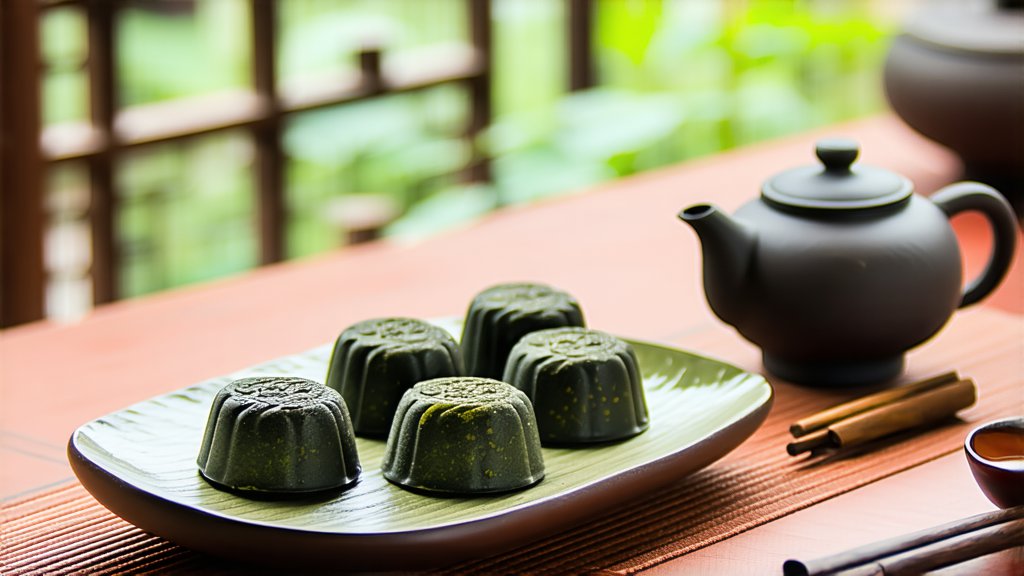
Pu-erh tea, a distinguished member of the Chinese dark tea family, holds a revered place in the annals of global tea culture. Its journey from ancient China to international tea enthusiasts is a tale woven with history, tradition, and meticulous craftsmanship. In this exploration, we delve into the world of Pu-erh, unraveling its historical roots, distinct varieties, intricate production processes, artful brewing techniques, and the nuanced appreciation that makes it a treasured beverage across continents.
A Glimpse into History
The origins of Pu-erh tea trace back over a thousand years to the Yunnan province in southern China, where favorable climate and geography fostered the growth of the large-leafed Camellia sinensis var. assamica plant. Legend has it that Pu-erh was discovered by accident when tea traders along the Tea Horse Road would stop in Simao, Yunnan, to rest. They would leave their green tea cakes to dry, and upon returning found them transformed into a unique, fermented tea with a rich flavor profile. This serendipitous discovery gave birth to what would become one of China's most celebrated teas, named after the city of Pu-erh, where it was traded and aged.
Varieties of Pu-erh
Pu-erh tea comes in two primary forms: Raw (Sheng) and Ripe (Shou). Each type undergoes different processing methods, resulting in contrasting flavors and aging potentials.
-
Raw Pu-erh (Sheng Cha): Made from fresh leaves that are sun-dried and then piled and fermented naturally. This process can take several weeks to months, allowing microbial activity to transform the tea's chemistry. Raw Pu-erh is known for its vibrant, complex flavors, often described as grassy, floral, or fruity, with a lingering bitterness that mellows over time. It continues to age and change, developing deeper flavors the longer it's stored.
-
Ripe Pu-erh (Shou Cha): Also starting with sun-dried leaves, this type undergoes an accelerated fermentation process involving controlled humidity and temperature conditions, which can last from several weeks to a few months. The result is a darker, smoother tea with earthy, woody notes and a distinctively mellow taste. Ripe Pu-erh is ready to drink shortly after production and ages more slowly than its raw counterpart.
The Art of Production
Pu-erh's allure lies not only in its taste but also in the intricate artistry involved in its creation. Here's an overview of the key steps:
-
Picking: Spring is the prime season for harvesting young, tender leaves, though some high-quality Pu-erh may include leaves picked during other seasons.
-
Withering: Leaves are spread out to wilt under the sun or in shaded areas, reducing moisture content and preparing them for rolling.
-
Rolling: The withered leaves are rolled manually or mechanically to bruise cell walls, releasing enzymes that initiate oxidation.
-
Fermentation (for Raw Pu-erh): Leaves are stacked and covered with damp cloths, allowing natural microbial fermentation to occur. Temperature and humidity are carefully monitored.
-
Airing: After fermentation, the tea is air-dried to halt the process and stabilize the flavor.
-
Compression: The dried tea is steamed and pressed into various shapes such as cakes, bricks, or balls. Compression aids in aging and makes storage more efficient.
-
Aging: Pu-erh is traditionally aged in bamboo baskets or paper wrappings, allowing it to mature and develop its characteristic depth and complexity over time.
Brewing the Perfect Cup
To fully appreciate Pu-erh's nuances, proper brewing is essential. Here's a guide to coaxing out its best flavors:
-
Water Temperature: Use boiling water (212°F/100°C) for both types of Pu-erh. The high temperature helps extract the tea's rich flavors and aromas.
-
Tea Quantity: Typically, 5-8 grams of tea per 150ml of water is recommended. Adjust according to personal preference.
-
Pre-warming: Warm the teapot and cups with hot water before brewing to maintain optimal temperature throughout the process.
-
Steeping Time: For Raw Pu-erh, the first infusion should be brief, around 5-10 seconds, to cleanse the tea and awaken its flavors. Subsequent steeps can be extended to 15-30 seconds. Ripe Pu-erh generally requires slightly longer initial steeps due to its softer nature.
-
Multiple Infusions: One of Pu-erh's delights is its ability to yield multiple infusions, each revealing different layers of flavor. Expect at least 5-7 infusions from a single serving.
Savoring the Experience
Appreciating Pu-erh goes beyond mere consumption; it's a sensory journey that engages sight, smell, taste, and touch.
- Visual Appreciation: Observe the tea's color, from the deep, rich hues of ripe Pu-erh to the brighter, more varied tones of raw Pu-erh. Note the leaf structure and any changes after steeping.
- Aroma: Inhale deeply before and after steeping. Raw Pu-erh may exhibit fresh, vegetal scents evolving into more complex, spicy or fruity notes with age. Ripe Pu-erh often exudes a comforting, earthy aroma with hints of wood or chocolate.
- Taste: Sip mindfully, allowing the tea to coat your palate. Savor the initial taste, noting any bitterness, sweetness, or umami. Pay attention to how the flavor evolves between infusions.
- Mouthfeel: Assess the texture—is it smooth and creamy, or more astringent and dry? Pu-erh's mouthfeel can vary greatly depending on processing and age.
- Aftertaste: Notice the lasting impression left on your tongue after swallowing. A good Pu-erh will have a pleasant, lingering aftertaste that invites another sip.
Conclusion
Pu-erh tea stands as a testament to China's rich cultural heritage and the artistry of tea making. Its dual nature—raw and ripe—offers a spectrum of flavors and experiences for connoisseurs and newcomers alike. Whether enjoyed for its immediate pleasures or cherished for its potential to age gracefully, Pu-erh invites us into a world where time, tradition, and terroir converge in a cup. As you embark on your own Pu-erh journey, may each infusion deepen your understanding and appreciation for this extraordinary tea, bridging cultures and generations through its timeless essence.